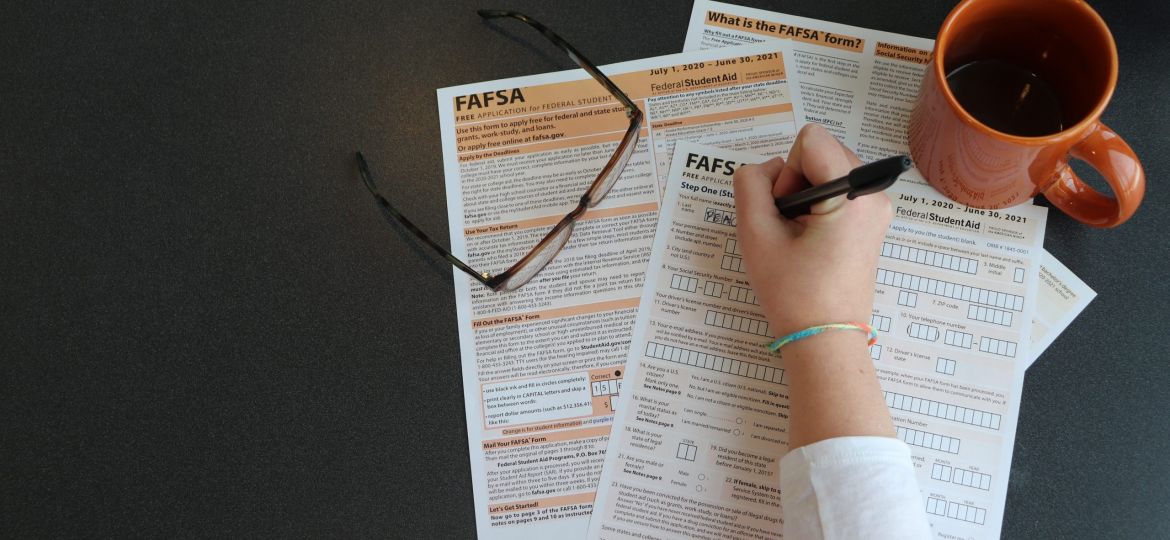
The price of St. Olaf continues to increase every year. The comprehensive fee for the 2020-2021 year is $63,110 – up from $60,980 in 2019-2020 and $58,690 in 2018-2019. University costs everywhere are incredibly expensive, and it is important for students to be aware of the options they have for receiving financial assistance. It’s beginning to be that time of year that students are thinking about financial aid, with the free application for federal student aid (FAFSA) due April 30.
St. Olaf takes the financial situation of students into consideration when admitting them to the College, making it a “need aware” institution rather than a “need blind” one. So while St. Olaf does work to meet the needs of all students, your financial situation is a factor in your acceptance to the College.
The increase in the comprehensive fee is smaller than in the past three years, thanks to the support of donors. For students with need-based aid, the institution will offer additional support through an increase in grants and federal student loans.
“However, in most situations, students will see an increase in how much they pay,” said Dean of Admissions and Financial Aid Chris George.
The Financial Aid Office is willing to work with students who need any additional support.
“Meeting need isn’t a uniform formula across schools, but rather financial philosophy,” said Director of Financial Aid Carly Eichhorst.
“The philosophy is that we will use a fair measure of the financial strength of a family to determine a family contribution,” Eichhorst continued. “Then we apply various types of aid to meet needs after the family contribution is calculated.”
Eichhorst is aware that, despite the financial aid given to students, financial need often goes deeper than what the College can accommodate, which speaks to a greater issue in society.
“I know that many students have tremendous financial needs beyond financial aid,” Eichhorst said. “We live in a society with tremendous income disparity and that manifests here too.”
Federal student loans are not a big consideration when calculating need-based aid. According to Eichhorst, the graduates of 2019 had an average debt of $28,950 and 60 percent of the class borrowed something. Eichhorst, however, emphasized that loans aren’t always the worst thing. St. Olaf consistently has a loan default rate of less than one percent, and nationally the College ranks relatively low for the amount of debt students leave with. Of the reported colleges in Minnesota, St. Olaf is fourth out of 24 for lowest amounts of student debt.
However, it is important to consider that many students struggle to handle their loan debt if they don’t plan to immediately go into a career after graduation.
This issue is a larger political one that is only getting worse under the current federal administration. President Donald Trump is currently trying to eliminate the Public Service Loan Forgiveness program, a program that forgives federal student loans for those employed full-time in federal, state or local public service jobs, or those employed in non-profit work. As many St. Olaf graduates consider these fields after graduation, this legislation may prevent graduates from entering low-wage careers that align with their moral ideologies in favor of fields with higher wages to pay off debt.
Eichhorst said that students should feel welcome to come in and talk about any financial issues they may be having and, when in a pinch, to apply for the Emergency Grant. While the grant is typically limited to about $500, it can be used for a variety of things, from new glasses, technology, books and safety needs. The application for this grant is easily available online, and is available to any student receiving need based aid at St. Olaf.
In the case of a more long-term financial struggle, Eichhorst said, “Every member of my team is available to work with students experiencing unique struggles. You can schedule an appointment online, or walk in to talk. The type of struggle really determines the course of action.”
Going in to a face to face meeting is preferable to an email for getting the best support. It can also be helpful to reach out to the class year deans who can be an advocate for you in times of financial difficulties. Eichhorst also urged everyone to remember to reapply for the FAFSA by April 30.

